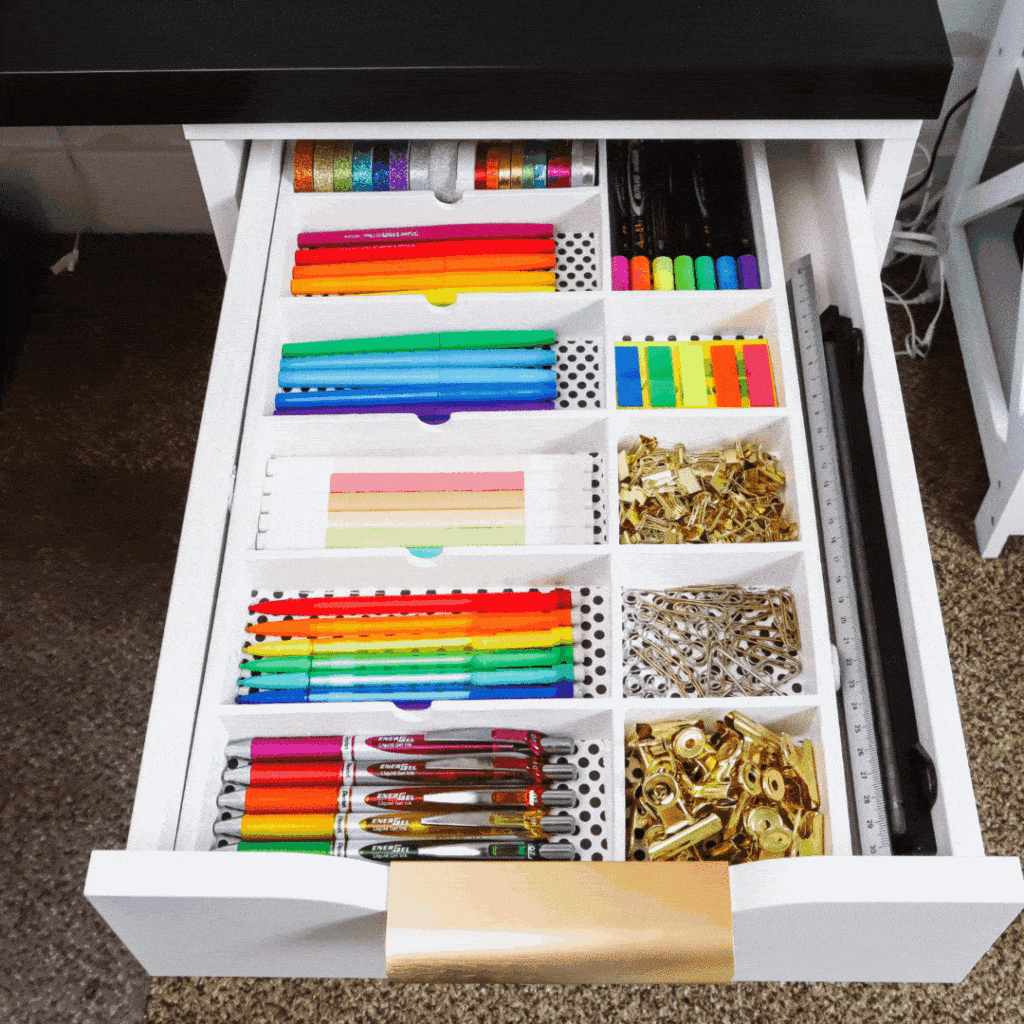Introduction
In the world of stationery, the joy of collecting pens, notebooks, and art supplies can quickly lead to a cluttered and disorganized workspace. But fear not, for with a little creativity and some practical organization tips, you can transform your stationery stash into a tidy and inspiring haven for creativity and productivity.
1. Assess Your Stationery Inventory
The first step in any organization endeavor is to take stock of your stationery collection. Gather all your supplies, from pens and markers to notebooks and sticky notes, and lay them out where you can see everything. This assessment helps you understand the scope of your collection and identify items you no longer use or need.
2. Categorize Your Supplies
Once you've assessed your stationery, categorize your supplies into logical groups. Common categories include writing instruments, notebooks and paper, art supplies, and desk accessories. Sorting your supplies into categories provides a clear structure for organizing and storing them.
3. Invest in Storage Solutions
Now that you've categorized your supplies, it's time to invest in suitable storage solutions. There are various options to consider, depending on your space and preferences:
-
Drawer Organizers: Drawer organizers come in various sizes and configurations, making them ideal for storing pens, pencils, and smaller stationery items. They fit neatly into desk drawers, keeping your workspace clutter-free.
-
Desktop Organizers: Desktop organizers, such as caddies or trays, can hold frequently used supplies like pens, scissors, and sticky notes. Choose organizers with compartments and slots for easy access
-
Shelving Units: For larger items like notebooks, sketchbooks, and reference books, consider shelving units or bookcases. Adjustable shelves provide flexibility to accommodate different-sized items.
-
Storage Boxes and Bins: Use decorative storage boxes or clear plastic bins to store stationery categories that you don't need to access daily. Label the boxes for quick identification.
4. Create a Designated Workspace
If you have the space, consider creating a dedicated stationery workspace. Whether it's a corner of your room, a desk, or a craft table, having a designated area for your stationery activities fosters organization and focus. Keep your frequently used supplies within arm's reach for convenience.
5. Label Everything
Labeling is your best friend when it comes to stationery organization. Label containers, drawers, and bins with the names of the items they hold. This not only makes it easy to find what you need but also encourages you to return items to their designated spots.
6. Prioritize Accessibility
Arrange your stationery so that frequently used items are easily accessible. Keep pens, pencils, and other essentials on your desktop or in a desktop organizer. Less frequently used items can be stored in drawers or on higher shelves.
7. Declutter Regularly
Stationery enthusiasts often accumulate items over time. To prevent your collection from becoming overwhelming, make decluttering a regular practice. Set aside time every few months to review your supplies and remove items you no longer use or need. You can donate or give away items that are in good condition.
8. Utilize Wall Space
If you're short on desk or shelf space, look to your walls for storage solutions. Install wall-mounted shelves, pegboards, or magnetic boards to store and display your stationery. This not only saves space but also adds a decorative element to your workspace.
9. Portable Stationery Kits
Create portable stationery kits tailored to specific tasks or projects. For example, assemble a travel journaling kit with a small notebook, pens, and watercolor pencils. Having these kits ready makes it easy to grab and go when inspiration strikes.
10. Maintain a Digital Inventory
For tech-savvy stationery enthusiasts, consider maintaining a digital inventory of your supplies. Use note-taking apps or spreadsheet software to catalog your stationery collection. Include details like purchase date, brand, and quantity. This digital inventory can be a handy reference when you're out shopping for new supplies.
11. Embrace Minimalism
While stationery can be a delightful collection, consider embracing minimalism by periodically evaluating whether new additions truly add value to your creative process. Quality over quantity often leads to a more organized and enjoyable stationery experience.
In conclusion, stationery organization is about creating a functional and inspiring workspace that reflects your unique style and preferences. By assessing your inventory, categorizing supplies, investing in storage solutions, and maintaining a clutter-free space, you can keep your stationery tidy, accessible, and ready for moments of creativity and productivity. Whether you're an artist, a student, or a professional, an organized stationery setup can enhance your workflow and make your creative pursuits all the more enjoyable.

